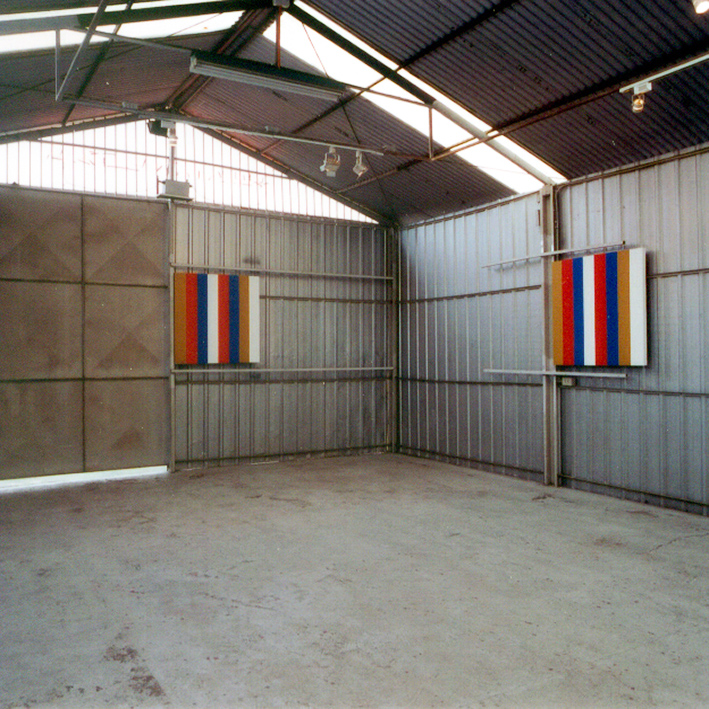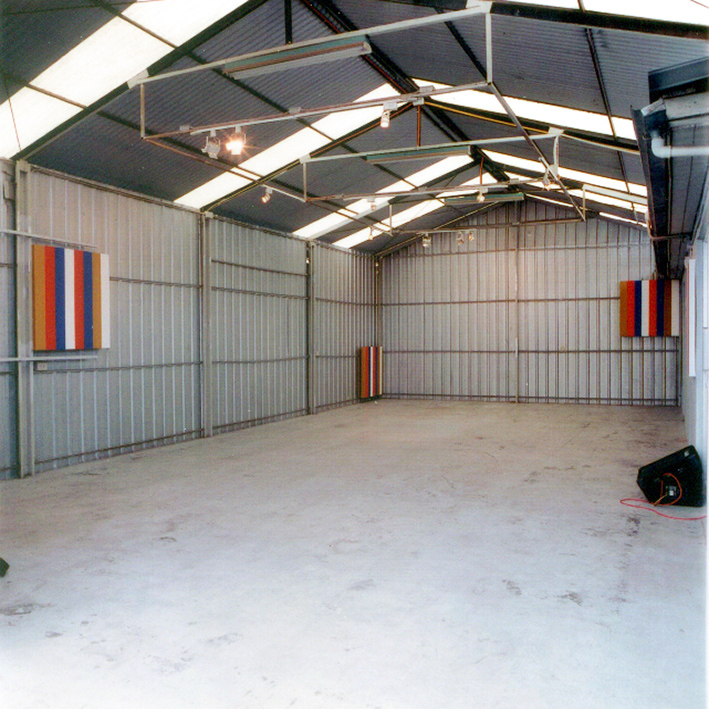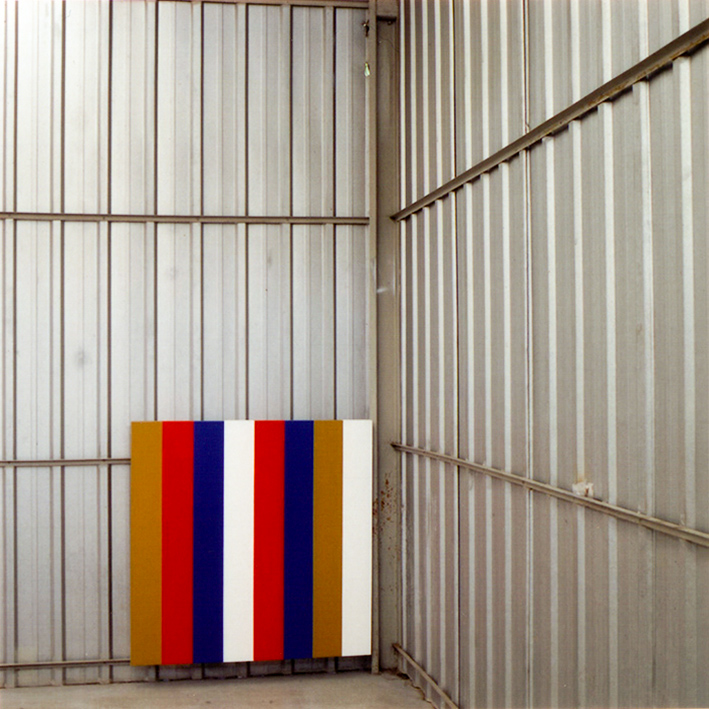Galería de Arte: Metropolitana
Exposición Individual: PAC
2002, Santiago.
6 pinturas producidas específicamente para el sitio e instaladas.
Acrílico sobre tela sobre tablero. 100x100x5 cm c/u, 2001-02



PAC
Galería Metropolitana
(Español)
Aspectos considerados, partes y asunto de la obra.
1-La galería: factor considerado como marco que rompe con el paradigma modernista de la “arquitectura blanca”. Galería de hojalata emplazada en los márgenes suburbanos, esta ha sido facilitada como una solución económica conexa al contexto urbano donde se sitúa. Ahora bien, “ en este punto de partida, partiremos dogmáticamente del axioma según el cual ningún contexto es absolutamente saturable o saturante. Ningún contexto determina el sentido hasta la exhaustibidad. No produce ni garantiza, pues, fronteras infranqueables, umbrales que ningún paso podría pasar, traspasar, trespass, (…)”1.
2-Los módulos: componen la obra, en primera instancia, en cuanto ficción de totalidad. Lo que se propone es que estos entren habitando e interviniendo la galería poniendo énfasis en lo tectónico, en las articulaciones (si bien, a veces postizas), en un esfuerzo por reconocer el terreno para, así, sobre determinar el sistema modular a unas relaciones compositivas de otra malla: la geometría de la galería. Consecuentemente, el conjunto de pinturas modulares implicado, por ello, en un proceso de desmodulación (y por eso, de descomposición), se informalizan los códigos de combinación y pertenencia del módulo con respecto a sus símiles, jerarquizándose, de este modo, una mirada dirigida a los espacios de ruptura o corte provocados en un sistema por otro.
3-La idea: consiste, en efecto y en la medida de lo posible, en borrar la red relacional que sujeta al régimen modular para inquietar el fragmento, el trozo, cortando el hilo de sujeción, por así decirlo, de su relato lineal, desmembrando la ilusión del gran conjunto final para, así, abrirlo a otra posibilidad de enlace al imbricarlo con otro u otros tejidos, texturas o textos si cabe (la arquitectura, desde luego, y los de las marcas o vestigios de otras obras ya transpuestas).
Abrir los límites, entonces, sería el propósito o, quizás, la fábula y lo imaginado; abrir o traspasar los límites entre un sistema y otro según una lógica de oposiciones o contrastes En fin, cruzar una frontera o la línea que señala el término de tal o cual extensión y, sin embargo, reconociendo que, cada vez, la decisión de pasar será concerniente a una “elección entre la relación con otro que sea su otro (es decir, otro que se le pueda contraponer en una pareja) y la relación con un cualquier / radicalmente otro que no se le puede contraponer, otro que ya no es su otro”2.
R. Galecio.
2002
(English)
Aspects considered, parts and subject of the work.
1-The gallery: factor considered as a framework that breaks with the modernist paradigm of “white architecture”. A tin gallery located on the suburban margins; this has been provided as an economic solution related to the urban context where it is located. Now, “at this starting point, we will dogmatically start from the axiom according to which no context is saturable or saturating. No context determines the meaning to the point of exhaustivity. It does not produce or guarantee, therefore, insurmountable borders, thresholds that no step could pass, cross, trespass, (…)”1.
2-The modules: they make up the work, in the first instance, as a fiction of totality. What is proposed is that they enter, inhabiting and intervening in the gallery, placing emphasis on the tectonic, on the articulations (although sometimes false), to recognize the terrain in order to, thus, determine the modular system to certain relationships. compositional images of another mesh: the geometry of the gallery. Consequently, the set of modular paintings involved, therefore, in a process of demodulation (and therefore, decomposition), the codes of combination and membership of the module are informalized with respect to their similes, thus hierarchizing a view directed at the rupture or cut spaces caused in one system by another.
3-The idea: it consists, in effect and to the extent possible, in erasing the relational network that holds the modular regime in order to disturb the fragment, the piece, cutting the thread of subjection, so to speak, of its linear story, dismembering the illusion of the final great ensemble to, thus, open it to another possibility of linking by interweaving it with another or other fabrics, textures or texts if possible (the architecture, of course, and those of the marks or vestiges of other works already transposed).
Opening the limits, then, would be the purpose or, perhaps, the fable and the imagined; open or cross the limits between one system and another according to a logic of oppositions or contrasts. In short, cross a border or the line that marks the end of this or that extension and, however, recognizing that, each time, the decision to cross will concern a “choice between the relationship with another who is his other (that is, another who can be contrasted in a couple) and the relationship with any / radically other who cannot be contrasted, another who is no longer his other”2.
R. Galecio.
2002
